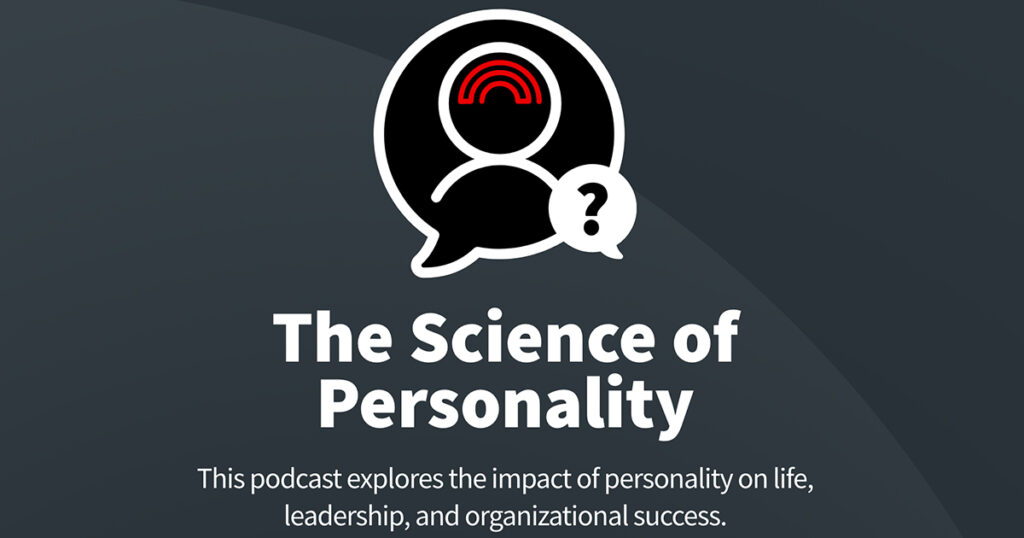
Superstar workers aren’t always as good as they seem. When other high performers must compete with superstars, they can become demotivated. This is known as the superstar effect, and it can have a significant impact on teams and organizations.
Recently on The Science of Personality, cohosts Ryne Sherman, PhD, chief science officer, and Blake Loepp, PR manager, explored the superstar effect and how it relates to teams and organizations.
Let’s dive into what to do about the problem of superstars.
What Is the Superstar Effect?
A superstar is a top performer. “The presence of a superstar impacts the performance of other people around them—often in a negative way,” Ryne explained. Just having a superstar nearby, whether on the same team or not, can hinder performance.
Record-breaking golfer Tiger Woods is an example of a superstar. The study that introduced the psychological phenomenon analyzed the performance of top golfers with respect to the presence of Woods. When he was in the field, his opponents shot worse on average than when he wasn't in the field. The mere fact of his presence seemed to drive down the performance of all of the competition. Even more remarkably, the stroke average of the best players was impacted more dramatically than that of average performers.
All possible explanations for this effect are mental. Perhaps the other golfers took more risks in trying to beat Woods. They also might have felt extra pressure because each shot matters more when competing against a superstar. Or they might have felt intimidated by Woods’s more eager and comparatively aggressive playing style, as golfer Ernie Els suggested.
We see the superstar effect in competitive chess, as well. Against the current world champion, Magnus Carlsen, most of the top players perform slightly worse than they do against other competitors. When Carlsen makes a move that looks like a mistake, other top players assume it is not an error but a complex play. What they should do is recognize the mistake and take advantage of it.
How Superstars Impact Teams
Imagine that, instead of Woods or Carlsen crushing individual competition, a top-performing sales rep or a hotshot lawyer is introduced into a new team. How does the presence of a superstar impact overall team performance in a corporate setting?
“The team on average may improve because the superstar is adding so much value, but individuals on that team might have lower performance because of the presence of that superstar,” Ryne said.
The superstar effect is a counterintuitive phenomenon. You would think that, with the addition of a high-performing team member, everyone else would rise to the challenge, so to speak. But when the skill gap is too great, others can feel fearful, intimidated, inferior, or defeated. The superstar effect could bring out employees’ derailers as they look for other ways to get ahead.
Another example of the superstar effect comes from the TV series Billions on Showtime. Intern Taylor Mason, whose investment prowess gains the notice of the main character and the consternation of the team members, is a corporate superstar. “You could see this psychological effect on the rest of these otherwise very successful investors and how it had a negative impact on their overall performance,” Blake explained.
What Organizations Can Do
If the presence of superstars is so detrimental to teams, is it better not to hire them at all? Not necessarily.
First, be realistic about the superstar effect.
Superstars can certainly add a lot of value, but maybe not as much as it first appears. A toxic worker is much more detrimental than a superstar worker is beneficial, for example. By that measure, an average team performs better than a team with one superstar and one toxic worker.
Second, redirect superstars’ competitive natures.
If your organization thrives on internal competition, the superstar effect will likely hurt productivity. But if competition is correctly reframed as external, there could be a good result: the superstar could impact organizational competition adversely, not team members.
The superstar effect makes competitors feel that they can’t beat the star. Consider how it would have felt to compete against entrepreneur Steve Jobs at Apple in the 2000s. Or think of competing against Michael Jordan on various basketball teams in the 1990s.
For organizations to integrate superstars into teams successfully, defining the competition is key. Hypercompetitive people want to compete with everyone, but that tendency can be directed outward, protecting team members from competing among themselves.
“Smart organizations can use the superstar effect to their advantage in a positive way,” Ryne said.
Listen to this conversation in full on episode 56 of The Science of Personality. Never miss an episode by following us anywhere you get podcasts. Cheers, everybody!